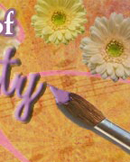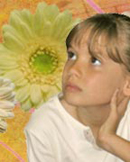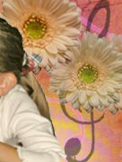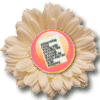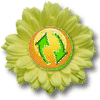 Creativity requires the courage to let go of certainties. Erich Fromm
Creativity requires the courage to let go of certainties. Erich Fromm
Are you ready to learn about creativity? This week's first interactive activity will start you on your way to exploring your own creativity. Click on the daisy to begin.
Welcome to Week 2! Last week you read about how important it is to promote and develop creative abilities in ourselves and in our students. This week we will focus on what prevents us from being creative, and the barriers we all face each day in our classrooms and lives that “squelch” our creative juices.
We all know that even in a democratic society, there is a need to follow rules, traditions, systems and regulations, so how does creativity fit in the mix? How do personal, social, cultural, and educational experiences shape the development of creativity? In order to create an environment that nurtures and supports creativity, we must first recognize the blocks and barriers that get in the way of the creative process. As we have read, researchers believe that we all have creative abilities; however, social pressure from home, school, or the community can suppress these abilities. Additionally, cultural pressures and socialization require all of us to conform to a certain mold.
This week’s reading addresses barriers, blocks, and creativity squelchers that hinder creative thinking and productivity: rules and traditions, habit and learning, perceptual blocks, cultural blocks, emotional blocks, and resource blocks. Some of these blocks are interrelated and stem from lifelong learning, while others are environmental. In this chapter the author also references Roger von Oech, a successful corporate creativity consultant and author of A Whack on the Side of the Head (1983), and shares his ten mental blocks to creativity. Von Oech maintains stimulating creative thinking is a matter of removing these ten mental blocks, thus we would all be more creative if we could remove the blocks and barriers to creative thinking.



